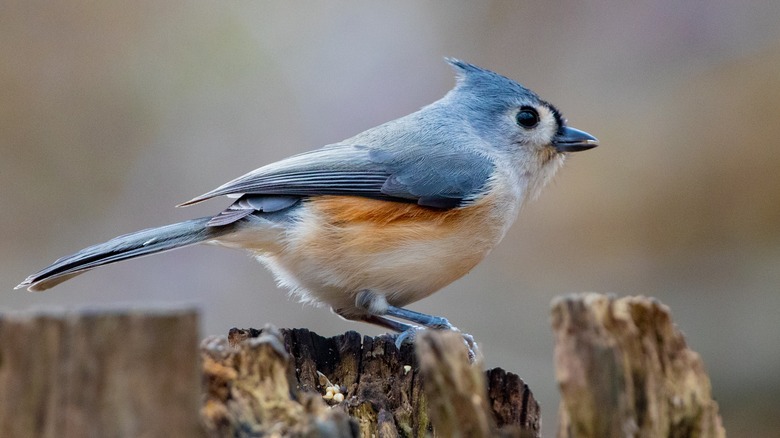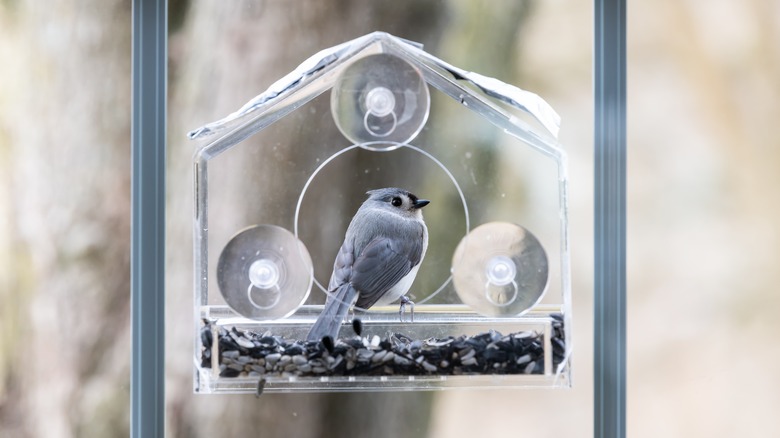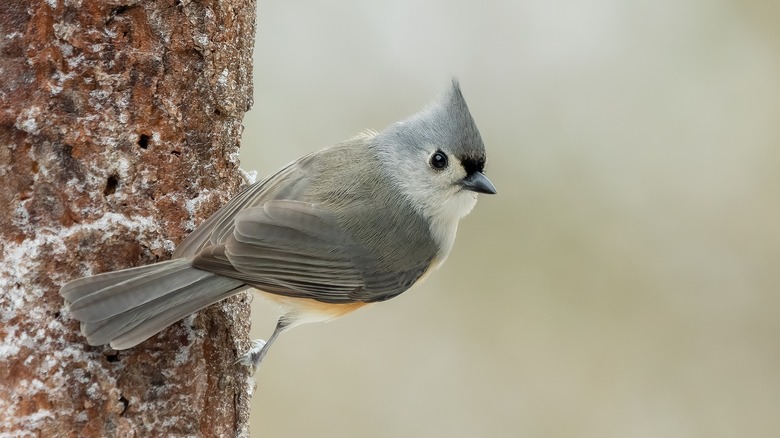Essential Tips That'll Have Tufted Titmouse Birds Flocking To Your Yard
The tufted titmouse is a jaunty little cousin of the chickadee. Unlike some other mating pairs of birds, the male and female tufted titmouse look almost exactly alike; they generally have gray feathers on their heads and backs, white throats and bellies, and rust-colored streaks of feathers just under their wings. These birds' other striking features include pointy crests capping their heads and large, black eyes with a beak to match. They can be fun to listen to and watch, so many bird enthusiasts do their best to entice them. So, what can you do to bring a few tufted titmice to your own yard? You can start by filling your bird feeders with some of their favorite snacks and then offering them a place to both live and nest.
Once these birds start frequenting your yard, you'll start hearing their song; if you listen closely, you may hear that it sounds like "peter-peter-peter." Be aware, though, that when they're alarmed, they throw their voices in order to confuse predators, so they might not be where you think they are based on that particular call. If you're more intrigued than ever about the tufted titmouse, here are some tips for feeding and housing them so they'll keep coming back to your yard.
What the tufted titmouse likes to eat
Tufted titmice have a broad diet that includes lots of insects, but what they eat does change throughout the year. During the summer, they forage for caterpillars but will also dine on flying insects like wasps, bees, spiders, snails, and a variety of insect eggs and larvae. When winter arrives, they switch over to nuts, seeds, and small fruits like berries. This makes a suet bird feeder blend (especially one that includes peanuts) a great choice for attracting tufted titmice in the wintertime. Sunflower seeds are also a favored snack for this flying friend.
If you notice a tufted titmouse returning to your feeder again and again, it's probably because of more than a voracious appetite. These little birds hoard food for winter — especially seeds — but they only take one morsel at a time. They'll usually crack it open and fly away with the nutmeat, only to stash it within 130 feet of the food source before they return for another.
Where tufted titmice like to live and nest
Since tufted titmice don't migrate, they end up living in the same areas year-round, generally the eastern half of the United States. Their favorite habitats are wooded areas where the trees shed their leaves in the fall. So, if you have a wooded yard or back up to a stand of trees like maples or birch and live in the right part of the country, the tufted titmouse could very well be attracted to your property. This is also something to consider when planting new trees in your yard, particularly if your goal is to attract more birds like the tufted titmouse.
If woodpeckers are making large holes in your trees, that's also a bonus for attracting tufted titmice since they like to nest in those cavities. They will, however, use bird houses in the absence of tree holes. In fact, the nesting box style is the best type of birdhouse for attracting tufted titmice. Creating an inviting habitat and putting out some of the tufted titmouse's favorite foods all year long will increase your odds of spying these feathered friends right in your own yard.


